This post may contain affiliate links. By clicking and making a purchase through the links, I earn a small commission at no extra cost to you. See my disclaimer for more information. This allows me to keep the site up to date and expand on resources.
Want to go whale watching in Puerto Vallarta? Read this first! I live in Puerto Vallarta and love wildlife. One of my favorite things about this city is watching the whales that come to feed every winter!
If you’re planning a trip to Puerto Vallarta, you’re probably dreaming of sandy beaches, vibrant nightlife, and, of course, the awe-inspiring experience of whale watching.
But here’s the thing— you could easily end up on a crowded boat, straining to catch a glimpse of a humpback’s tail fin. Talk about a letdown, right?
Ready to go whale watching? This is the tour I recommend, as it’s led by a marine biologist.
As someone who lives in Puerto Vallarta and has a deep love for wildlife, I’ve been whale-watching more times than I can count. I’ve seen the good, the bad, and the truly magical when it comes to these tours. There’s nothing like the feeling of locking eyes with a humpback whale as it breaches the water’s surface.
So, whether you’re a first-timer or a seasoned whale watcher, stick around. I’m going to share insider tips, recommended tours, and tips on how to be a responsible marine observer.
⭐️⭐️⭐️⭐️⭐️
✅ See whales, dolphins and turtles
✅ Tour is led by a biologist
✅ Snacks and lunch included
Whale watching tours in Puerto Vallarta
The best chance to see the giant humpback whales up close is on a guided whale-watching tour tour. You’ll see whales up close and gain valuable insights into their behavior.
When it comes to whale watching, you’ve got options. From budget-friendly group tours to private charters, there’s something for everyone. But remember, you get what you pay for. Higher-end tours often come with marine biologists as tour guides, ensuring an educational and respectful experience.
Being a responsible tourist is crucial. Opt for tours that follow international whale-watching guidelines. These tours maintain a safe distance from the whales and limit their time spent near each pod. Your choices make a difference in marine conservation.
Here are the best whale-watching tours in Puerto Vallarta.
Private Whale Watching Tour Tour
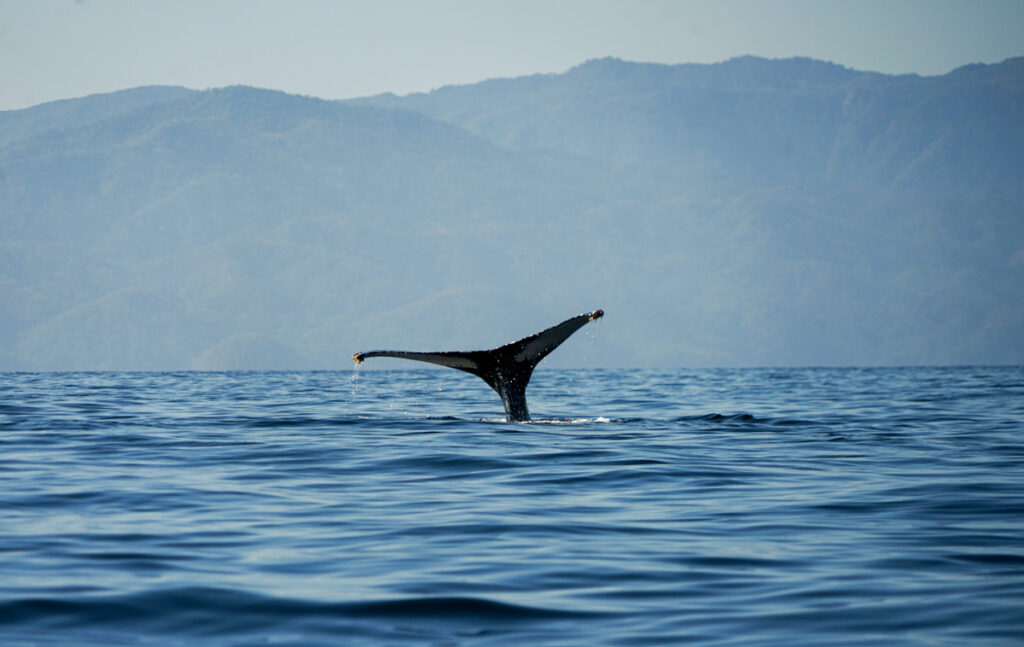
⭐️ Rating: 5/5 | 🕐 Length: 3.5 Hours | ✔️ Book it here
If you’re looking for a whale-watching experience that’s a cut above the rest, consider booking a private tour.
Imagine this: you, your loved ones, and a marine biologist all to yourselves as you venture into the stunning Banderas Bay. No jostling for a good view, no distractions—just you and the whales.
Had a wonderful trip! We saw a lot of whales!!one of the best experiences that we had. We were able to see the whales up close without harming them.
– Ansu (read more reviews here)
This isn’t your average tour. You’ll depart from the marina in a well-equipped boat guided by an expert in marine biology. The focus is on education and conservation, so feel free to ask all the questions you’ve ever had about marine wildlife.
Your day starts at Marina Vallarta, where you’ll meet your guide and set sail by 9 a.m. As soon as whales are spotted, you’ll get close—but not too close. The tour adheres to responsible whale-watching guidelines, limiting each encounter to 30 minutes to minimize disturbance.
Around noon, the boat transforms into a floating deli, offering lunch with a 360° marine view. By 1 p.m., you’ll be back at the marina, your head and camera filled with unforgettable memories.
This tour is perfect for all ages, and it’s especially great for families with kids.
Responsible whale-watching tour in Puerto Vallarta
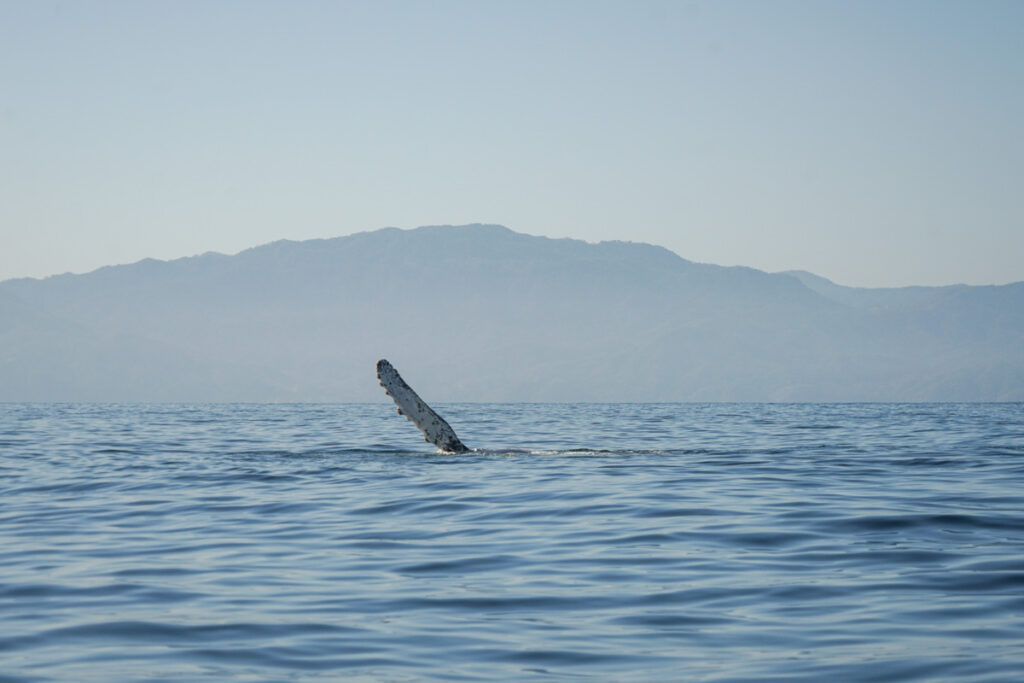
⭐️ Rating: 4.5/5 | 🕐 Length: 3.5 Hours | ✔️ Book it here
This responsible whale-watching tour led by Wildlife Connection takes 3.5 hours and shows you humpback whales and other marine life with a marine biologist.
You’ll meet your marine biologist guide at the pier in Puerto Vallarta, who will give you important safety information and an introduction to what to expect during the whale-watching trip.
We saw 5 whales early on but the highlights were a solo orca and a mom with cub who were incredibly active. Hearing the whale songs was also beautiful.
– Saadia (read more reviews here).
From there, you’ll set out on the bay to begin your search for the whales while the guide provides you with information about these fascinating animals. Once the whales are spotted, you’ll get as close as possible while remaining respectful of the whales and their environment.
Around noon, enjoy a complimentary lunch and get the opportunity to listen to a whale singing with specialized equipment before making your way back to Puerto Vallarta.
Exclusive whale-watching cruise
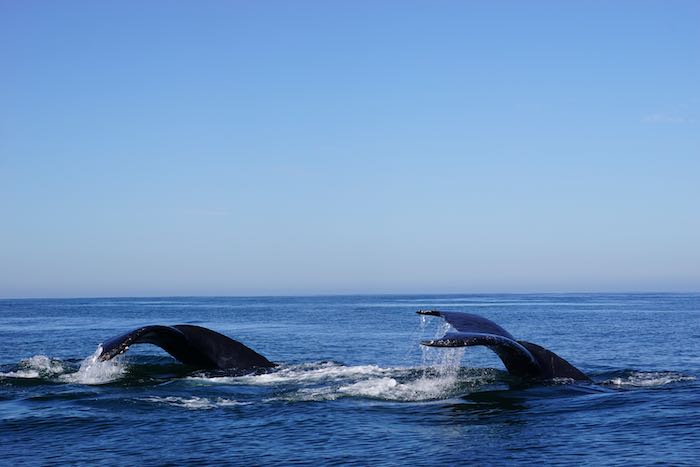
⭐️ Rating: 5/5 | 🕐 Length: 3.5 Hours | ✔️ Book it here
If you’re looking for more of a party, check out this exclusive whale-watching cruise. After getting picked up from your hotel, you’ll head out to the boat, where you’ll enjoy a delicious Mexican breakfast before heading out to the Bay of Banderas.
Spend some time admiring the whales playing in the water while enjoying onboard entertainment and an informative commentary from your local guide.
In all our travels this was the best excursion we have been on. Captain Victor knew where to go to see the most amazing mammals on earth.
– Cara (read more reviews here).
A buffet lunch is included, along with your choice of alcoholic or non-alcoholic drink from the onboard open bar, which stocks everything from vodka and rum to cocktails and fruit juice. This could be a fun tour if you’re a group of friends!
Puerto Vallarta whale watching season
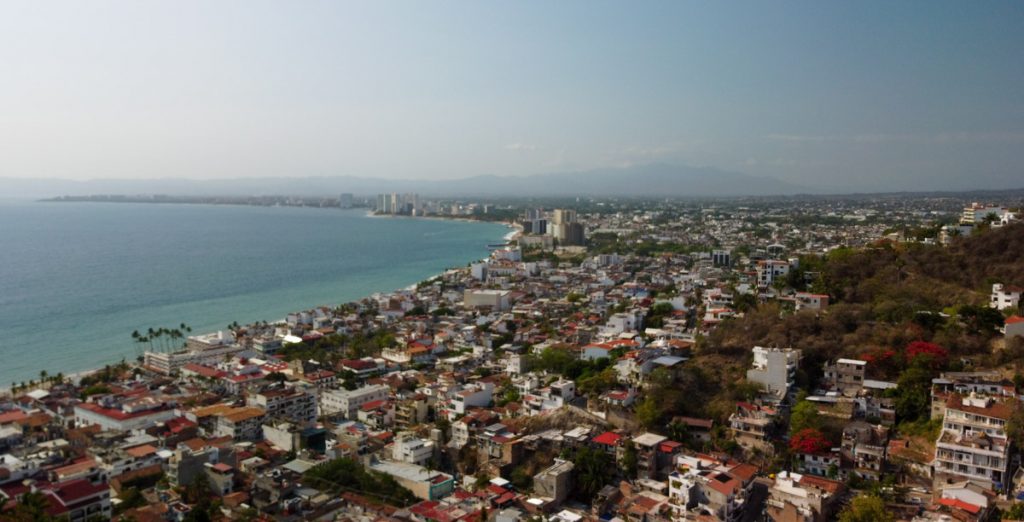
Every year, thousands of humpback whales migrate from the Arctic, leaving the cold waters and swimming more than 3,000 miles to give birth and nurture their young in the warm tropical waters around Mexico.
The sheltered waters in the Bahia de Banderas, where Puerto Vallarta is located, offer the perfect conditions for the whales and for you to see them thrive in their natural habitat.
The Puerto Vallarta official whale-watching season begins in December and ends in late March. However, sometimes whales can be seen as early as November, or the whales don’t leave the sheltered bay until April.
Still, the best time to see the whales in Puerto Vallarta is during the winter months from December until March, which coincides with the high season in Puerto Vallarta, the most popular time to visit.
Why go whale watching in Puerto Vallarta
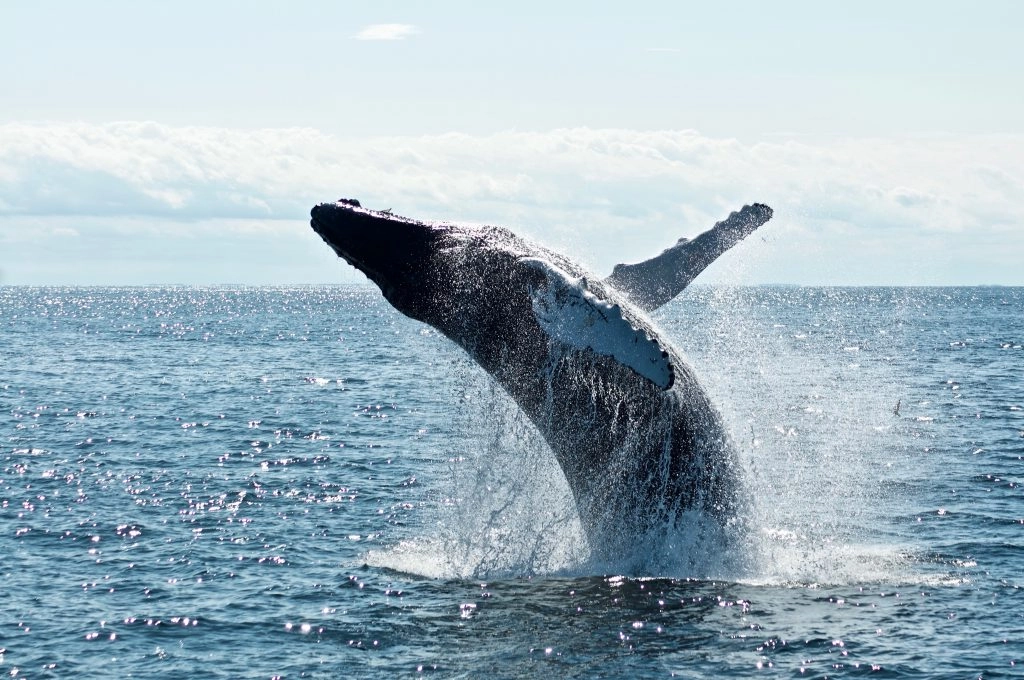
Where can you spot the whales in Puerto Vallarta? Is it necessary to book a guided tour on a boat, or can you see them from the shore?
Of course, the chances of seeing a humpback whale are best when you take a whale-watching tour.
By joining a whale-watching tour in Puerto Vallarta, you’ll get a closer look at the whales than you would from shore! Plus, the tour guides will provide interesting information on whale behavior.
When on the boat, it’s pretty easy to spot the whales. Just watch out for the apparent hump on their backs and the long dorsal fins. Often, you can see their fluked tail on the water.
If you’re lucky, you will even have the chance to watch the whales breach as they leap from the water and flop back to the surface. The crash will send water in all directions, so ensure you don’t get your camera wet when taking pictures!
Ready to go whale watching? This is the tour I recommend, as it’s led by a marine biologist.
What kind of whales are in Banderas Bay?
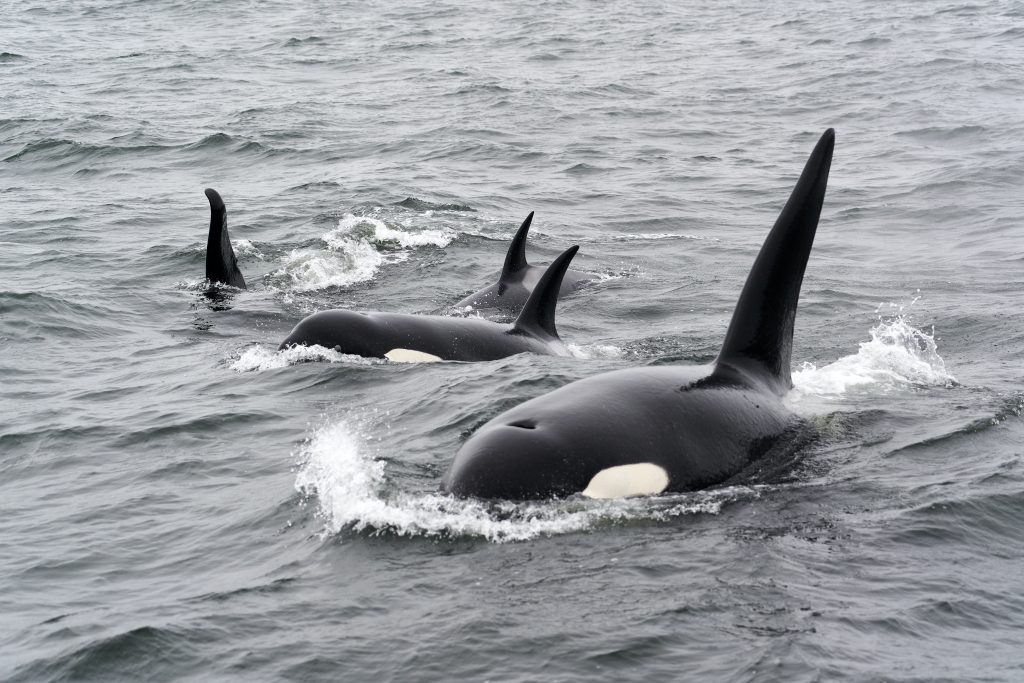
In Puerto Vallarta, you can see one of the world’s most stunning mammals: the humpback whale. Each year, around 18,000 whales travel to Banderas Bay, where they stay for several months.
They are the most common whale species in Puerto Vallarta and can be seen yearly, but humpback whales are not the only marine life you can see here!
In winter, you can sometimes see majestic orcas, and if you’re lucky, you may even spot brides’ whales and minke whales. It’s rare, but I once saw orcas in Puerto Vallarta while coming back on a boat from Los Arcos!
The whales are essential members of the North Eastern Pacific Ocean ecosystem. Even if commercial whaling is banned, they are vulnerable to extinction and constantly endangered by ocean debris, pollution, and entanglement. Therefore, the whales in Puerto Vallarta are protected by law.
Tips for Whale Watching in Puerto Vallarta
Whale watching is the experience of a lifetime, but a little preparation goes a long way. Here are some insider tips to make your adventure truly unforgettable.
Choose the Right Time of Day
The best time of day to see whales in Puerto Vallarta is in the early morning, when there is calmer water and less boat traffic. This increases your chances of a more intimate encounter with the whales.
Dress Appropriately
Layers are your friend. Mornings can be chilly, but as the sun rises, you’ll want to shed some clothes. Also, don’t forget a waterproof jacket.
Bring the Right Gear
A good camera with a zoom lens is a must. Binoculars can also enhance your experience. Just make sure both are secured to avoid any overboard tragedies.
Stay Hydrated and Snack Smart
Most tours offer water, but bringing your own reusable bottle is a good idea. Pack some light, non-greasy snacks like fruit or granola bars to keep your energy up. I once went whale watching hungover, and it really dampened the experience. Learn from my mistakes!
Listen to the Experts
Your guides are a wealth of knowledge. Listen closely to their commentary to learn about the whales’ behaviors, conservation status, and more.
Be Patient and Respectful
Whale-watching is a waiting game. Keep a respectful distance and remember that these are wild animals in their natural habitat.
By following these tips, you’re setting yourself up for a whale-watching experience that’s as enjoyable as it is respectful to these magnificent creatures. Now, you’re not just a tourist but an informed and responsible marine observer.
Other marine animals around Puerto Vallarta
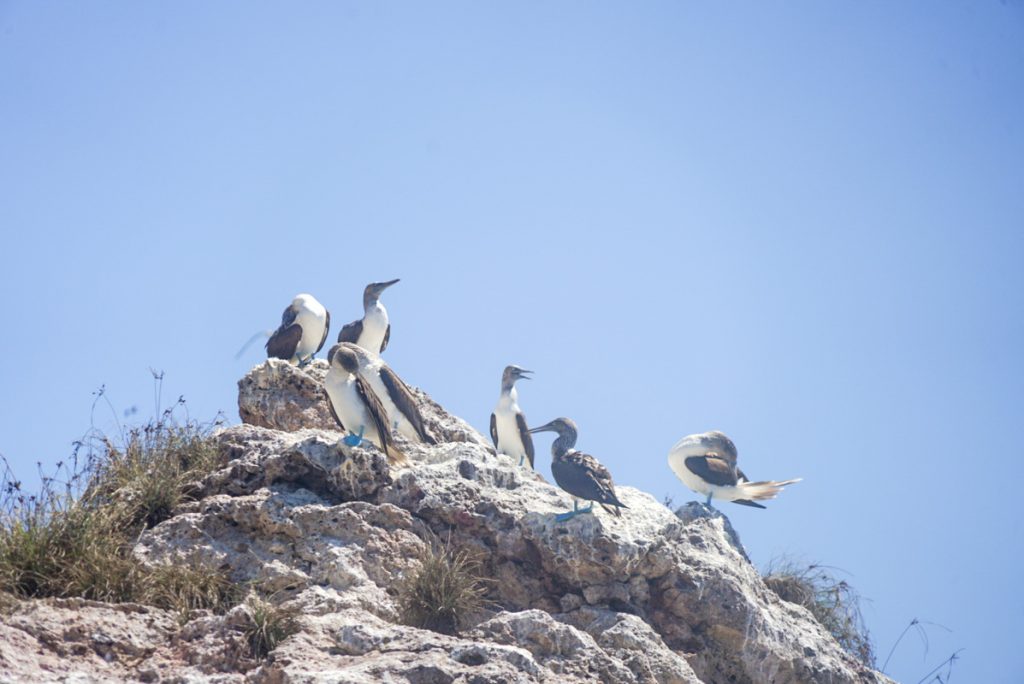
The Bay of Banderas is home to an abundance of marine birds, including brown pelicans, cormorants, frigates, or blue and brown-footed boobies.
If you’re interested in seeing birds on your trip to Puerto Vallarta, you’ll want to take a day trip to Isla Marietas, where you can often see whales and dolphins on the boat ride out.
Several different species of dolphins live in the bay and are often seen while on whale-watching tours in Puerto Vallarta. These include bottlenose dolphins, spotted dolphins, spinner dolphins, and rough-toothed dolphins.
It’s also possible to see giant manta rays and sea turtles, including small ridges and massive Leatherback turtles.
Other places to go whale watching in Mexico
While Puerto Vallarta is undoubtedly one of the top places in Mexico to go whale watching, it’s not the only place in the country! Here are some other unique destinations in Mexico where you can see various species of whales.
- Puerto Escondido, in the state of Oaxaca, is an excellent place to see whales in the Sea of Cortez from mid-December to March. I visited in June past the whale season, but we still saw orcas while dolphin-watching, which was an incredible wildlife experience.
- Mazatlan, a popular beach town further up north, is another excellent place to see humpback whales and ten other species in The Mazatlan-Teacapan zone.
- Cabo San Lucas, in Baja, California, is a great place to see grey whales from January to April.
- Loreto Bay, in Baja, California, is one of the best places to see the blue whale, the biggest mammal on earth!
FAQ: Puerto Vallarta whale watching
Can you swim with the whales in Puerto Vallarta?
Since the whales are protected by law, it is not possible to swim with them. Any interaction that might interrupt them is prohibited. This includes diving, swimming, snorkeling, fishing, and feeding.
Can you see whales from shore in Puerto Vallarta?
It’s possible to see the whales from the shores of Puerto Vallarta. However, humpback whales prefer to stay away from the immediate shore, so you need to scan the distance to find them.
Can you swim with the whales in Puerto Vallarta?
Since the whales are protected by law, it is not possible to swim with them. Any interaction that might interrupt them is prohibited. This includes diving, swimming, snorkeling, fishing, and feeding.
How close can boats go to the whales?
Small boats with a length of up to ten meters can come no closer than 60 meters. Larger boats that exceed 10 meters are not allowed to come closer than 80 meters.
What is the best month for whale watching in Puerto Vallarta?
The best months for whale watching in Puerto Vallarta are December through March. This is when humpback whales are most active in the Bay of Banderas.
What time of day is best to see whales in Puerto Vallarta?
Early morning is the best time for whale watching. The waters are calmer, and there’s less boat traffic, increasing your chances of a close encounter.
How much does it cost to see whales in Puerto Vallarta?
Prices can vary widely, from around $100 for a basic group tour to upwards of $700 for a private, guided experience with a marine biologist.
Are there killer whales in Banderas Bay?
Killer whales (orcas) are rare but not unheard of in Banderas Bay. They’re more commonly seen in the open ocean off the Mexican Pacific coast.
Do whale sharks go to Puerto Vallarta?
Whale sharks are generally not found in Puerto Vallarta. They prefer the waters around the Yucatán Peninsula, especially near Isla Holbox.
How long are whales in Banderas Bay?
Humpback whales typically stay in Banderas Bay from late November to late March, making it a seasonal hotspot for whale watching.
What do I need to know before whale watching?
Before you go, make sure to pack essentials like sunscreen, a hat, and a good camera. Also, choose a reputable tour operator that follows responsible whale-watching guidelines.
What are the odds of seeing a whale on a whale watch?
The odds are high, especially during peak season. Most reputable tours have a success rate of over 90% for spotting whales.
Final thoughts: Whale watching Puerto Vallarta
Whale watching in Puerto Vallarta is more than a tourist activity; it’s a chance to connect with nature on a profound level.
From the stunning backdrop of the Bay of Banderas to the diverse marine life that calls it home, this place offers an unparalleled experience. You’ll not only witness the awe-inspiring humpback whales but also gain a deeper understanding of their behaviors and the ecosystem they inhabit.
If you’re looking to elevate your whale-watching experience, I highly recommend the private tour with a marine biologist. It’s an educational, intimate, and responsible way to engage with these magnificent creatures.
Planning a trip to Puerto Vallarta? Check out these activities immersed in nature!
- How to Visit The Butterfly Sanctuary in Puerto Vallarta Mexico
- How to Visit the Puerto Vallarta Botanical Gardens
- 21 Best Beaches in Puerto Vallarta Mexico
- 9 Best Encounters With Wildlife In Puerto Vallarta
- How to Visit Los Arcos Marine Park Puerto Vallarta
- How to Swim with Dolphins In Puerto Vallarta Ethically
- 7 Magical Waterfalls in Puerto Vallarta
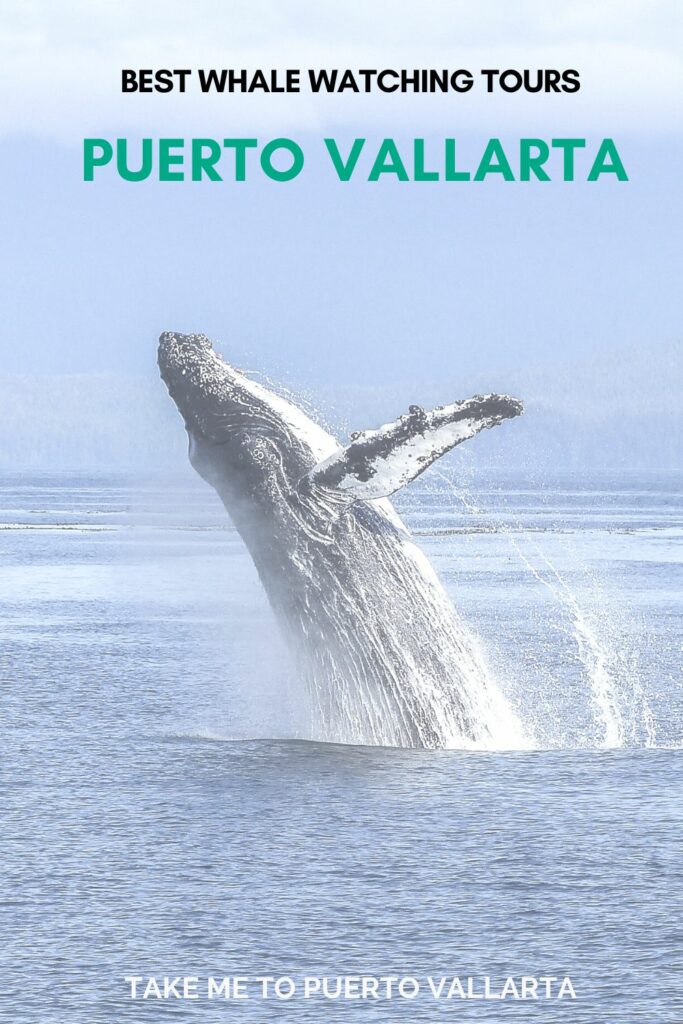
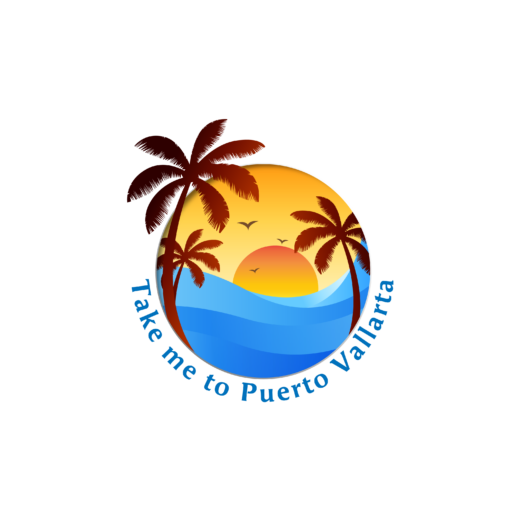
[…] the Puerto Vallarta whale watching season begins in December and ends in late March, which coincides with the high season in Puerto Vallarta, […]
[…] dolphins, rough-toothed dolphins, and maybe even orcas on the tour. If you’re visiting during whale-watching season (December to March), you may also see […]